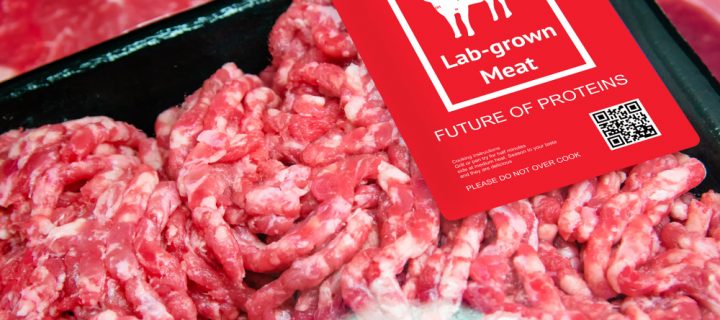Lab-grown meat is real meat without some of the negative elements.
You’ve probably heard of soy burgers and Beyond Meat-that stuff that tastes and looks almost like the real deal but isn’t quite. Meat substitutes have been around for a long time, providing meat eaters with alternatives and vegetarians with meals that complement those of the carnivores. But what about lab grown meat?
This type of protein may be the wave of the future as it allows humanity to step away from raising animals to eat. Our cravings for meat are unsustainable for the planet and as the global population continues to grow, this “fake meat” may be the solution that keeps us going. What is lab-grown meat and its benefits? Here’s a look.
Innovations in science lead away from the barn
Every year, billions of animals on land and in the sea are bred in captivity in order to fill our dinner plates. From shrimp, to chickens and cows, our taste for meat and fish is hard to meet, (for lack of a better phrase). Animals bred in factory farms are often subjected to conditions of overcrowding and disease, leading to sorrowful, short lives without much joy, however. The human population is predicted to reach its maximum around 2100 and with this will come an even greater need for factory-grown meat. Lab-grown meat presents an alluring solution.
Related: Eating later reduces your calories burned and changes your fat
Harvesting of muscle cells
Also known as cultured, cell-based, clean, or cultivated meat, lab-grown meat is made from the muscle cells of a living animal. These cells are “harvested” from a living animal and taken to a lab. Here, the sample is placed in a bioreactor before being added to a bath of nutrients. These cultured cells then multiply and grow as real muscle tissue. Scientists use something called “scaffolding” to grow the meat into the shape of the item needed. Chicken nuggets, steaks, and sashimi can all be created without taking the life of a single being. It’s a slaughter-free method that can be of great benefit.
Cultured meat is real meat
While it takes a different route towards its creation, cultured meat is real meat. It isn’t made from soy or peas but the actual flesh of animals.
Some say lab-grown meat presents the advantage of not being pumped full of antibiotics. Many of the animals we now eat as factory-farmed meat do receive regular doses of antibiotics in an effort to keep diseases at bay. This contributes to antibiotic resistance, however, and isn’t seen as the best solution. Lab-grown meat also doesn’t have the same fat content as conventional meat. While this may present some stumbling blocks on the way to great taste, it means this type of meat can potentially be better for your heart.
As with many new technologies, lab-grown meat is currently a bit expensive to produce. As its popularity grows, however, its hoped the costs of production will come down, making this a viable alternative for daily living.
To read more about this issue, check out this post.
photo credits: Zapp2Photo/Shutterstock.com











